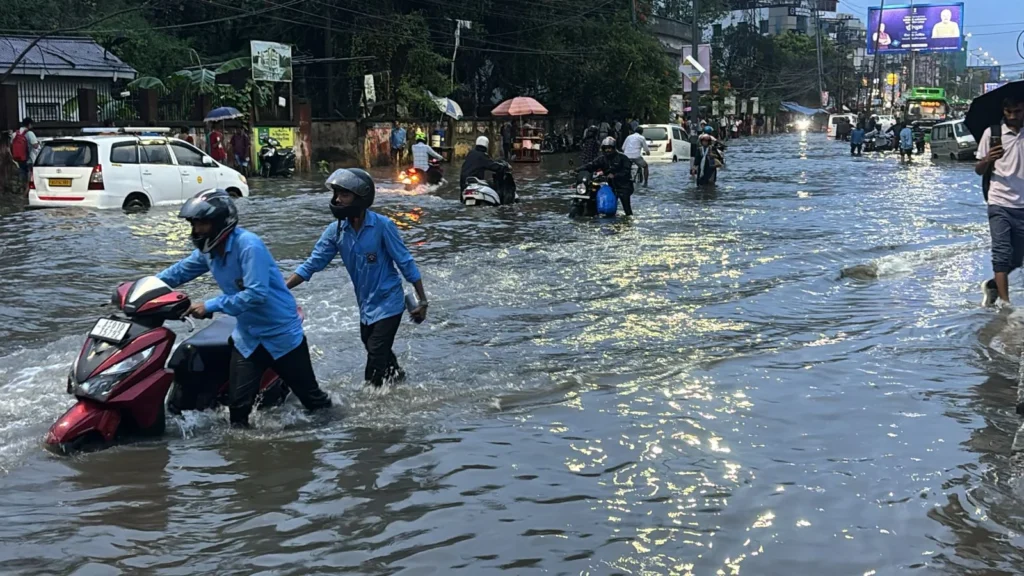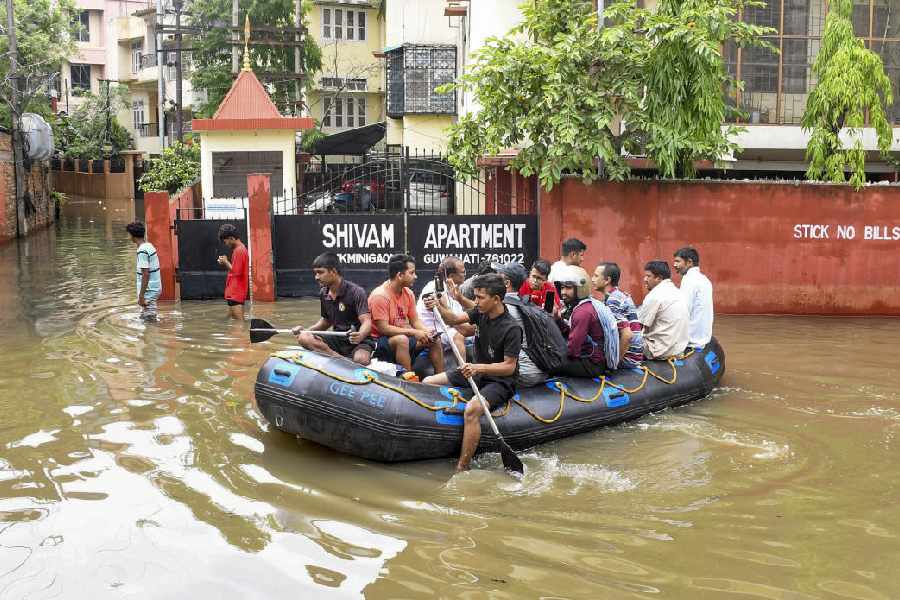Guwahati the capital city of Assam recently experienced severe flooding due to relentless rainfall. The downpour led to widespread waterlogging disrupting daily life and exposing the city’s infrastructure vulnerabilities. This article delves into the causes impacts and responses to the flooding aiming to provide a comprehensive understanding of the situation.
The Deluge: What Happened in Assam?
On May 20 2025 Guwahati was hit by heavy overnight rains resulting in significant flooding across the city. Major roads and residential areas were submerged causing traffic chaos and forcing schools to shut down. The Indian Meteorological Department (IMD) recorded 112.5 mm of rainfall in the city with forecasts predicting continued heavy rain over the next few days

Areas Most Affected In Assam
Several localities bore the brunt of the flooding including Zoo Road Nabin Nagar Hatigaon Ganeshguri and Maligaon. Residents in these areas faced knee to chest-deep water making movement difficult and hazardous. The situation was exacerbated by the city’s inadequate drainage system which failed to cope with the volume of water .

Impact on Daily Life Guwahati
Education Disrupted Many schools across Guwahati were forced to close due to waterlogged campuses and inaccessible roads. In some institutions that remained open student attendance was minimal as transportation became nearly impossible .
Transportation Chaos Public transport services were severely affected leaving commuters stranded. Office-goers faced long delays with some reporting commute times extending over three hours. Key roads like Zoo Road and Ulubari were submerged causing massive traffic jams
Power Outages The heavy rains also led to power cuts in several parts of the city. Areas like Chandmari and Nabin Nagar experienced electricity outages adding to the residents’ woes
Government Response
Emergency Measures In response to the crisis the Assam government activated emergency protocols. The State Disaster Response Force (SDRF) deployed personnel and rescue boats in flood-prone areas. District commissioners were instructed to enhance local responder capacities and ensure the availability of clean drinking water .
Infrastructure Initiatives To mitigate future flooding the government initiated the demolition of structures encroaching upon the Silsako Beel a protected wetland. This move aims to restore the wetland’s capacity to hold floodwaters thereby reducing the risk of urban flooding .
Root Causes of the Flooding
Urbanization and Encroachment Rapid urbanization has led to the encroachment of natural drainage systems including wetlands and rivers. The reduction of these natural buffers has significantly increased the city’s vulnerability to flooding .
Inadequate Drainage Infrastructure Guwahati’s drainage system is ill-equipped to handle heavy rainfall. Poor maintenance and outdated infrastructure contribute to frequent waterlogging during monsoon seasons
The Road Ahead: Recommendations
Sustainable Urban Planning Implementing sustainable urban planning practices is crucial. This includes preserving natural water bodies enforcing strict regulations against encroachments and developing green spaces to absorb excess rainwater.
Infrastructure Upgrades Investing in modern drainage systems and regular maintenance can significantly reduce the impact of heavy rains. Upgrading infrastructure to cope with extreme weather events is essential for the city’s resilience.
Community Awareness Educating residents about flood preparedness and encouraging community participation in maintaining local drainage systems can enhance the city’s ability to manage such crises.
Conclusion
The recent flooding in Guwahati underscores the urgent need for comprehensive urban planning and infrastructure development. Addressing the root causes of flooding through sustainable practices and proactive governance is imperative to safeguard the city’s future.
